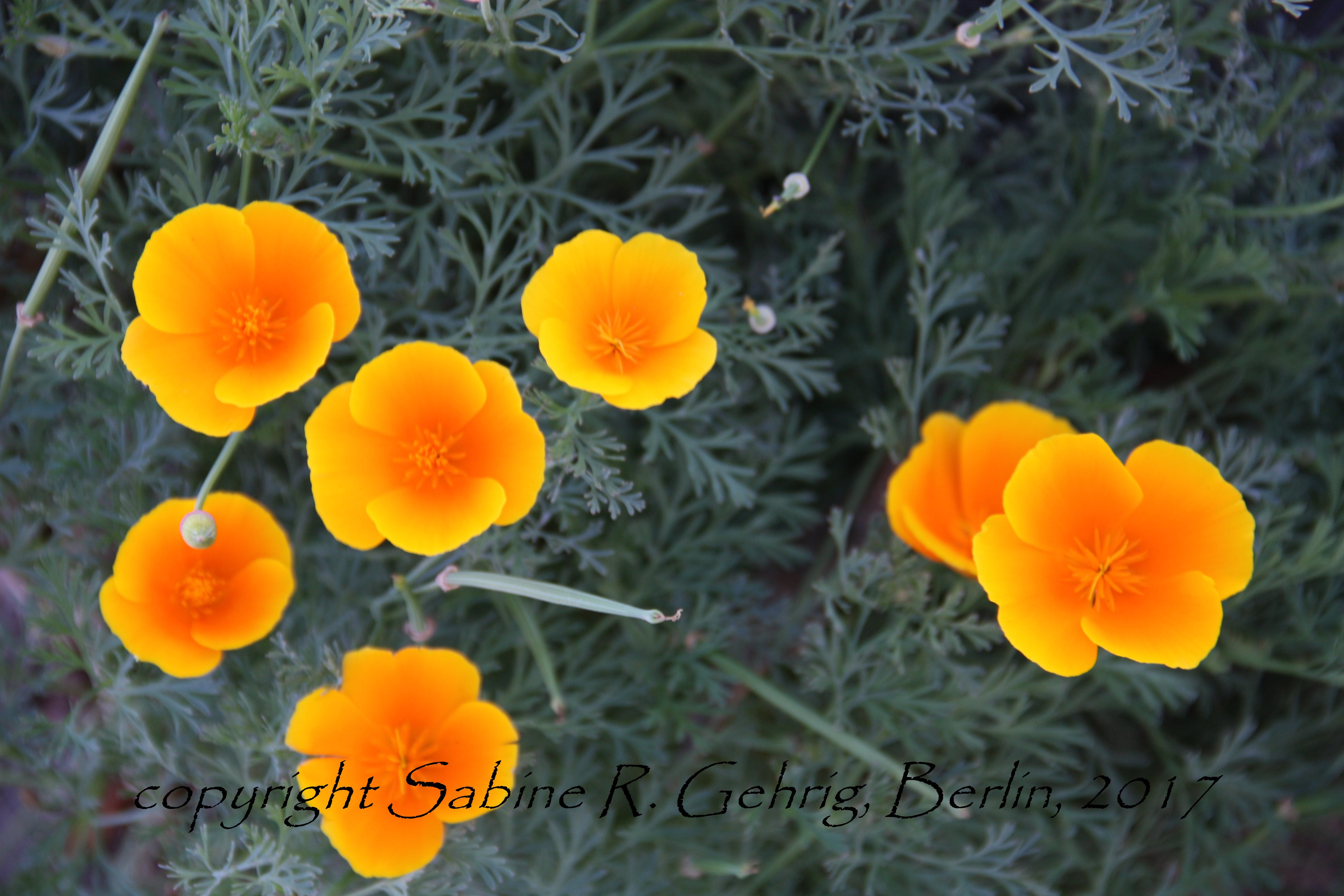Im Museum im Fort Ross State Historic Park habe ich etwas Interessantes über die Staatsblume Kaliforniens erfahren – die California Poppy, im Deutschen: Kalifornischer Mohn oder auch Goldmohn, Kalifornischer Kappenmohn, Schlafmützchen. Der lateinische Name lautet Eschscholzia californica.
Warum ist mir dies eine Geschichte wert? Nun, zum einen, weil ich diese orangen blühende Blume mag und zum anderen, weil ein Deutscher sie nach einem Deutschen benannte. Der deutsche Dichter und Naturforscher Adelbert von Chamisso war 1815 bis 1818 Teil der Rurik-Expedition, bei der bisher unbekannte Tiere und Pflanzen in Kalifornien dokumentieren sollte. Von Chamisso benannte diese Blume nach seinem Kollegen und Freund Johann Friedrich von Eschscholtz. Er war Mediziner und als Schiffsarzt und Naturforscher bei der Expedition dabei. Durch Übersetzungen seines Namens ins Kyrillische und zurück in die lateinische Schrift erhielt der Name zwei ‚sch‘.
1903 wurde sie zur Staatsblume Kaliforniens ernannte und der 6. April ist der California Poppy Day. 2016 wurde sie zur Giftpflanze des Jahres erklärt, da alle Teile von ihr mehr oder weniger giftig sind.

California Poppies
English Summary
At the museum at Fort Ross State Historic Park I read something interesting about the California State Flower – the California Poppy.
Why do I write about this? First, because I love this flower. And second, because a German named it after a German. The German botanist and poet Adelbert von Chamisso named it after the Baltic German botanist Johann Friedrich von Eschscholtz. They both were friends and participated in the scientific Rurik-expedition (1815 to 1818) to California, the South Pacific and Alaska commanded by Otto von Kotzebue.
In 1903 the poppy became the official state flower of California. In 2016 it was declared “Toxic Plant of the Year” because all their parts are poisonous.
0 Kommentare